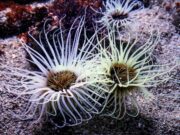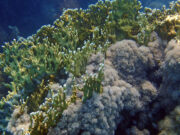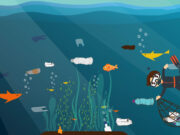With more than 1000 islands and islets, including the famous Dalmatian Islands, Croatia offers a wealth of diving opportunities and truly lives up to its name as ‘the country of a thousand islands’. Famed for its exceptional water visibility and cobalt blue waters, Croatia offers some of the best diving in Europe.
For enthusiasts looking to combine sailing and diving, Croatia Sailing with Sail Croatia provides specialised itineraries that take you to some of the top diving spots in the country. It can bring you up close to sunken ships, breathtaking coral reefs, and marine life, making it a perfect choice for those looking to explore both above and below the waterline.
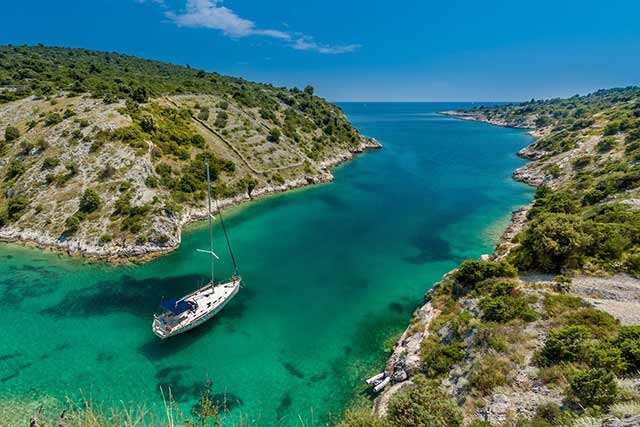
New divers can enjoy thriving reefs, sunlit caverns and shallow wrecks, whilst experienced divers explore deep WWI and WWII wrecks and plunging walls. There are extensive cave networks, an underwater archaeological museum, a UNESCO World Heritage dive site, and rocky landscapes covered in vibrant marine life.
From north to south, we’ve got your top Croatia dive destinations covered in this ultimate guide to diving there.
11 great places to go diving in Croatia
Northern Croatia
1. Istria peninsula
The Istria peninsula is the largest peninsula within the Adriatic Sea and offers many diving opportunities in Croatia’s famously-clear waters.
This peninsula is hugged by pretty towns and dotted with medieval hilltop villages. Below the waterline, lie some of Croatia’s best wrecks, including the famous Baron Gautsch, Coriolanus, Hans Schmidt (also called the Istra) and Giuseppe Dezza.
As well as abundant wrecks, Istria has excellent snorkeling, night diving and cave diving at nearby Fraškeri? Island. There you will find a network of beautiful caves and tunnels at 3 – 16 meters deep that attract divers every year.
2. Kvarner Gulf
Tucked away next to the Istria peninsula, the Kvarner Gulf (also known as Kvarner Bay) has diving for all experience levels. There are idyllic islands with soft white sands, pebbly coves and diverse dive sites.
 Image: Hrvoje Photography/Unsplash
Image: Hrvoje Photography/UnsplashThe Lina is one of Croatia’s most-visited wrecks and lies just off Cres Island in the Kvarner Gulf. She was once an oil and wine transporter that sailed the entire Mediterranean and now lies on the seabed at 25 – 55 meters deep.
There is a fascinating underwater archaeological park at Losinj Island, with abundant Roman and Venetian artefacts in shallow waters. You can go reef diving at nearby Susak Island and experience one of Croatia’s must-do dives, the Tunnel of Prvi?, at Prvi? Island. Starting at 18 meters deep, the tunnel rises to the shallows and is covered in marine life.
Central Croatia
3. Kornati National Park.
With dozens of idyllic islands along the Dalmatian coastline, you are spoilt for choice when you go diving in Croatia. The Kornati National Park is a must-visit dive destination to put at the top of your list if you visit the central region.
This archipelago just off Zadar has a rugged coastline and bright blue waters begging to be explored. You can go diving there with certain authorized dive centers and explore hidden caves, caverns, wrecks, sheer walls and huge rocks. The underwater landscapes are covered in bright sponges and fish life abounds.
4. Premuda Island.
Nearby Premuda Island hosts one of the most popular dive sites in the north Dalmatian Islands, Cathedral Cave. This dive site is named for its enormous dome-like roof dotted with holes that allow the sunlight to penetrate through. With a soft white sand bottom and a network of underwater tunnels and passageways as well, it is ideal for underwater photography.
Southern Croatia
5. Dubrovnik
The Southern Dalmatian coast and islands are a playground for scuba divers and include more dive sites than you could ever wish for. Diving in Dubrovnik is very popular and offers an easy starting point to explore this captivating area.
 Image: Matthias Mullie/Unsplash
Image: Matthias Mullie/UnsplashDon’t miss the Taranto shipwreck, a UNESCO World Heritage Site just off the shore of this historic city. This transport ship sank in 1943 and is a thriving artificial reef in 10 – 52 meters of clear blue water.
Take a 15-minute boat ride to nearby Lorkum Island to dive the SS Tomislav. This well-known wreck is almost fully intact and has a cargo of tractors swathed in reef life, plus passing pelagic fish.
Head north of Dubrovnik to Split and you can access the many dive sites of Bra? Island, Vis Island, Biševo Island and Kor?ula Island.
6. Brac Island
At Brac Island, you can meet Bol’s famously-friendly dolphins or go deep cave diving at Cave Lu?ice. This cave system has two chambers, with stalactite and stalagmite formations and walls covered in red corals.
Purple Bay is another dive highlight at Brac, with four drop-offs that host a wide variety of marine plants, plus scorpion fish, sea fans and sponges. When you’ve had your fill of diving, take a stroll to Zlatni Rat (the ‘Golden Cape’). This is Croatia’s most iconic and photogenic beach and is also a top windsurfing destination.
 Image: Oliver Sjöström/Unsplash
Image: Oliver Sjöström/Unsplash7. Vis Island
Vis Island offers outstanding diving, with hundreds of caves and caverns, plus numerous WWI and WWII shipwrecks. There is easy wreck diving for novices and more challenging dives for advanced divers.
The Fortunal wreck is a true beauty that experienced divers won’t want to miss. She sits on white sands at the bottom of a vertical wall at 37 – 52 meters deep and is framed by the exceptional water visibility this area is known for.
8. Biševo Island
Nearby Biševo Island hosts one of Croatia’s true wonders, the Blue Grotto. This shimmering grotto needs to be seen to be believed. The water inside the grotto turns almost fluorescent blue when the morning sunlight streams in.
Understandably, this sea cave has been described as “the most enchanting cave experience in the world”. Diving there is second to none and the grotto contains plenty of marine life.
9. Korcula Island
Forest-draped Korcula Island has a wide variety of marine life just below the surface, making it a perfect island for new divers. There are dozens of dive sites to choose from, including accessible shallow wrecks, reefs and seagrass beds.
More experienced divers will no doubt enjoy Korcula’s caves and deep walls, including the 50-meter-deep wall dive at Sveta Marina.
10. Sušac Island
Lying southwest of Korcula, Sušac Island may be tiny, but it hosts the famous Te Vega dive site. This spectacular dive site features a small sea lake, which you reach through a shallow underwater tunnel.
The bottom of the lake is covered in bright algae and hosts numerous parrotfish and gobies, plus octopi, eels and starfish. At the surface, this sea lake is surrounded by towering walls over 30 meters high.
Inland Croatia.
11. River diving
Not all of Croatia’s best diving is along the coastline. If you explore inland Croatia, leave time to go river diving. Croatia’s rivers are absolutely stunning, surrounded by verdant valleys and with gin-clear waters.
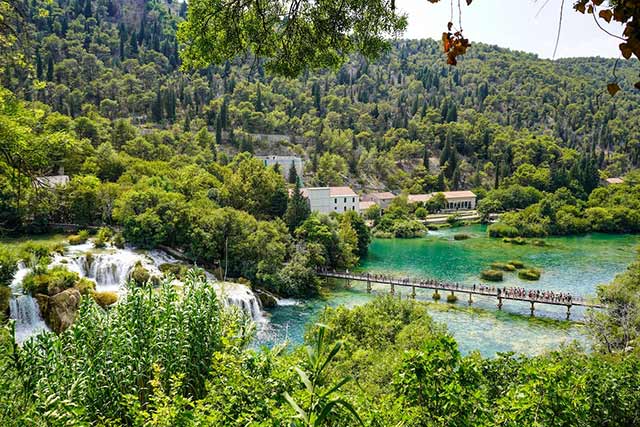 Image: Tom Wheatley/Unsplash
Image: Tom Wheatley/UnsplashThere are many rivers for divers to explore in Croatia, but the source of the Cetina River is high on the bucket list. The Cetina River Spring is a karst spring with clear, cold waters. It is a hidden gem and no easy dive, but the limestone rock formations and scenic views of the church overhead make it well worth diving if you can.
What marine life can you see when diving in Croatia?
Croatia’s waters host an array of marine life large and small. In southern Croatia, it is not uncommon to see schools of tuna in the blue, plus swordfish, mahi-mahi, amberjack, and occasional blue or thresher sharks.
Wherever you dive in Croatia, the reefs are colorful and host diverse life, including scorpionfish, seahorses, lobsters, conger eels and octopi. Many of the dive sites are covered in vivid sponges, plus sea fans and corals.
What experience do you need to go diving in Croatia?
Diving in Croatia is suitable for all experience levels. With so many excellent wrecks to explore in Croatia, it is a good idea to become a wreck diver before you go.
When is the best time to go diving in Croatia?
You can go diving in Croatia all year, though the main season runs from May to October. Visit in the summer for the warmest waters and calm conditions.
Kathryn Curzon, a shark conservationist and dive travel writer for Scuba Schools International (SSI), wrote this article.
Main photo credit: Hrvoje Photography/Unsplash
Image credits:
- Croatia-island: Hrvoje Photography/Unsplash
- dubrovnik: Matthias Mullie/Unsplash
- golden-cape-croatia: Oliver Sjöström/Unsplash
- Krka-River-National-Park: Tom Wheatley/Unsplash




